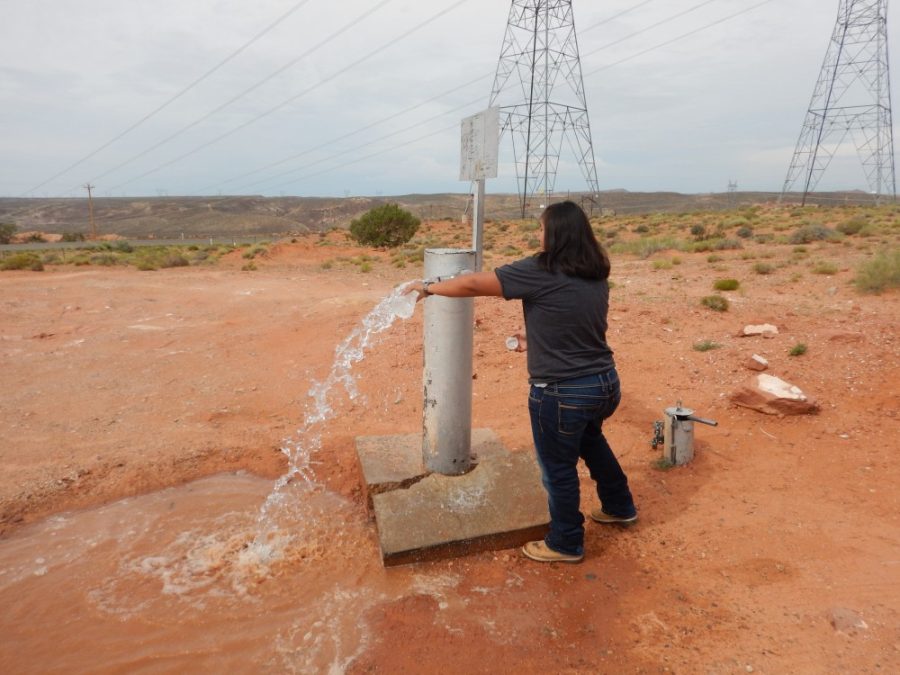The UA’s Center for Indigenous Environmental Health Research recently received a $5.1 million grant to enhance its efforts and expand its work in indigenous communities.
The center, which was established in the fall of 2015 and has members who have been collaborating with native tribes since 2008, recently became fully funded by the National Institute of Environmental Health Sciences, the U.S. Environmental Protection Agency and the National Institute on Minority Health and Health Disparities.
Housed in UA’s Mel and Enid Zuckerman College of Public Health, CIEHR is funded to help with environmental health disparities with efforts concentrated in partnering with tribes and native communities.
Stephanie Rainie, UA assistant professor of public health and CIEHR assistant director, said the goal of the center is to provide expertise through collaborative work on projects focusing on environmental hazards that the tribes themselves have identified.
“We want to make a link between science, data and decision making,” Rainie said. “We hope to inform tribal communities’ decisions by responding to their need to learn information and increasing their access to this relevant data.”
Rainie said with the correct information, the tribe can best determine how to address the issues in their community.
The CIEHR is currently working on two research projects with the Hopi and Navajo Nation tribes.
Jani Ingram, a professor of chemistry and biochemistry at Northern Arizona University, is the principal investigator of the center’s project, Health and Well Being Impact of Contamination of Traditional Food and Water on the Navajo.
“The project is looking particularly at the contamination of water and mutton, which is traditional food of the Navajo and how that’s related to the contaminated areas near the old uranium mine sites,” Ingram said. “There’s lots of environmental and analytical chemistry involved, collection and analyzing samples.”
Ingram said the research they’re doing in the environment will impact the community. Their goal is to actually take the data they gather and develop policy that has a foundation in Navajo traditional law.
Ingram, who is a member of the Navajo Nation, said a lot of her students working on the project are also Navajo members.
“It’s important for the research not to be done by outsiders, but people interested in what’s going on in their own community,” Ingram said.
Mary Kay O’Rourke, UA professor of public health and co-leader of the center’s respiratory health examination project with the Hopi Tribe, said one of the most important aspects of the center is they aren’t just making up topics to do research.
“This evolved over a long-standing relationship with the tribe and what we’re doing are issues that the tribe identified that they wanted to have information on, so [the tribe] could improve conditions for people who live in their community,” O’Rourke said.
O’Rourke said they’re examining aggregate exposure looking at the intake of water, food and inhalation, and whether there’s an increase in infectious disease or asthma due to increased exposure.
“I think people—wherever they are—should not have differential health outcomes because of exposures in their environment,” O’Rourke said. “I believe we should all have equal opportunity when it comes to clean environment and access to those things that will make us healthy.”
O’Rourke said they’re particularly concerned because there seems to be an elevated asthma rate in the Hopi Tribe and that they will be sampling air quality inside and outside of homes, getting access to dietary records and taking water samples.
“The goal is to figure out what the exposures are, identify ways to mitigate those exposures and relate those things to health so we can try and figure out actions the tribe can take to resolve some of the health issues,” O’Rourke said.
Robin Harris, the co-leader on the project, and the rest of the researchers will begin field work in the fall—which will entail collecting samples from 30 houses each year for three different years.
In addition to these two projects, Rainie said they are in the process of creating pilot programs. These pilot programs will take a broad perspective of what environmental health is and what environmental hazards are, taking into consideration the home environment and violence in the neighborhood and community.
Rainie said the center also puts giving experience and opportunities to students and community members as a priority, so they can address these issues in their own communities.
Connor Kelley, a UA graduate research assistant on the Hopi Project, said he appreciates the opportunity to work and the experience he’s getting.
Currently Kelley is working on questionnaire development with the institutional review board, which is responsible for the human rights aspect involved in research.
“This is really good experience for [me],” Kelley said. “Not many grad students get to join a project at this stage, when it’s still in preparation.”
O’Rourke said it’s important to her and her co-lead to increase the number of scientists who can actually do field work that is complex and involves years of receiving and analyzing data.
“Some groups are happy with their students just analyzing data, but to our group it’s really important that all of our students have real field experience,” O’Rourke said. “That is what will make you a viable scientist in this area.”
Follow Chastity Laskey on Twitter.









